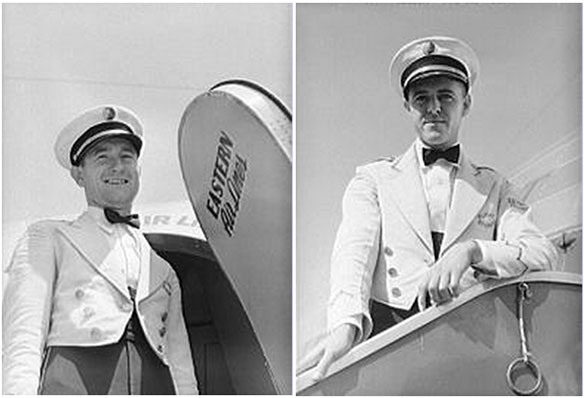When the airline industry first tried to go commercial after World War I, it needed to convince skeptical customers that air travel was safe. One strategy was to make passengers feel that the entire crew was able and willing to see to their safety. This included the stewards, the all-male precursors to the stewardess.
But which men to hire?
The default employee should have been an African American. Ocean liners and train cars, air travel’s main competitors and the model on which they built their business, largely employed black porters and stewards. But the airlines believed that the overwhelminglywWhite passengers would not have felt comfortable placing their lives in the hands of black men. So they hired white men instead. Kathleen Barry, who discusses this in her book Femininity in Flight, explains:
Equanimity on aircraft circa 1930 was a tall order for anyone, but stereotypes dictated that it would most likely come from white male attendants. With uniforms that echoed the naval-style garb of pilots, stewards reassured passengers that the white men in the cabin as well as the cockpit were competent and in control.

If stewards were so capable and appreciated, why not offer one’s appreciation in cash? The answer is, in short, because tips were for black people. Black porters on trains and boats were tipped as a matter of course, but, according to Barry, tipping a white person at the time would have been equivalent to an insult. A journalist, writing in 1902, captured the thinking of the time when he expressed shock and dismay that “any native-born American could consent” to accepting a tip. ”Tips go with servility,” he said. Accepting one was equivalent to affirming “I am less than you.”
This interpretation of the meaning of a gratuity, alongside airlines’ need to inspire confidence and simple racism, is why we don’t tip flight attendants today.
This post originally appeared onSociological Images, a Pacific Standard partner site.




